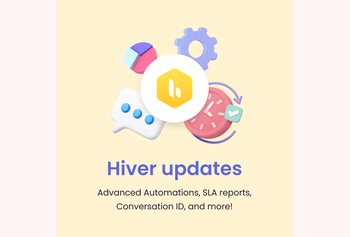Breaking Down NPS: Key Strategies for an Improved NPS Customer Experience

Table of contents
The Net Promoter Score (NPS) stands out as a critical metric, guiding businesses toward a better understanding of customer satisfaction and loyalty. NPS operates as a measure of customer loyalty and satisfaction, gauging the likelihood of customers recommending a product or service on a 0-10 scale.
Among some of the biggest brands out there, Princeton Mortgage and Tesla secure spots at the top of the list with NPS scores of 98 and 97 respectively.
In this post, we will not only analyze the NPS customer experience but will also delve into its significance, calculation methodology, and best practices. As we strive to maintain and grow high NPS customer experience standards, this blog post will help you understand how to improve NPS throughout the customer journey.
Table of Contents
- What is NPS?
- Why use NPS for measuring customer experience?
- How to calculate NPS:
- When and how should I send an NPS survey?
- Best practices for using NPS to measure customer experience
- Net promoter score: Key facts and FAQs
- Summing up
What is NPS?
Net Promoter Score is more than a metric; it’s a philosophy rooted in a simple yet potent question: “How likely is it that you would recommend our company/product/service to a friend or colleague?”
Respondents rate the question on a scale from 0 to 10, categorizing them into Promoters (9-10),Passives (7-8),and Detractors (0-6).
Why use NPS for measuring customer experience?
NPS provides a snapshot of overall customer sentiment, surpassing traditional metrics by focusing on the likelihood of customers recommending a brand. This recommendation factor is often correlated with long-term loyalty and business growth.
How to calculate NPS:
The NPS is derived by subtracting the percentage of detractors from the percentage of promoters. The resulting score ranges from -100 to 100, with a positive score indicating a positive customer sentiment.
| Respondent | Rating | Category |
|---|---|---|
| 1 | 9 | Promoter |
| 2 | 6 | Detractor |
| 3 | 8 | Passive |
| 4 | 10 | Promoter |
| 5 | 5 | Detractor |
Percentage of Promoters = (Number of Promoters / Total Respondents) x 100
Percentage of Detractors = (Number of Detractors / Total Respondents) x 100
NPS = Percentage of Promoters – Percentage of Detractors
What is considered a good NPS?
An NPS above 0 is generally seen as positive, with a score of +50 or higher considered excellent. However, the definition of a “good” score varies across industries.
When and how should I send an NPS survey?
When implementing NPS surveys, strategic timing and careful selection of survey channels are crucial factors that significantly impact the effectiveness of the feedback gathered.
Let’s delve deeper into the key considerations for determining when and how to send an NPS survey:
1. Mapping the customer journey:
Understanding the customer journey is fundamental to identifying optimal survey touchpoints. Map out the various stages a customer goes through, from initial awareness to post-purchase interactions. Recognize critical moments where customer sentiments are likely to be shaped.
2. Post-purchase follow-up:
Sending NPS surveys shortly after a customer makes a purchase can provide valuable insights into their satisfaction with the buying process. This approach capitalizes on the immediacy of the experience, increasing the likelihood of receiving accurate and relevant feedback.
3. After key interactions:
Targeted follow-ups after significant interactions, such as customer support interactions, product deliveries, or service engagements, offer insights into specific touchpoints. This allows businesses to understand how well they performed during critical moments that directly impact customer satisfaction.
4. Regular but not Intrusive surveys:
While it’s essential to gather feedback consistently, it’s equally crucial not to overwhelm customers with excessive surveys. Striking a balance by implementing regular but not intrusive surveys ensures ongoing feedback without causing survey fatigue.
5. Multi-channel approach:
Utilize various communication channels for NPS surveys. This could include email, SMS, or even in-app surveys, depending on where your customers are most active. A multi-channel approach increases the chances of reaching customers at the right time and through their preferred channels.
6. Seasonal considerations:
Factor in seasonal trends or industry-specific timelines. For example, in the retail sector, post-holiday periods might be suitable for capturing insights related to the overall shopping experience.
7. Feedback loop integration:
Integrate NPS surveys into your broader feedback loop. Combine NPS insights with other feedback channels, creating a comprehensive understanding of customer sentiments across various interactions and touchpoints.
By incorporating these considerations into your NPS survey strategy, you can enhance the relevance and effectiveness of the feedback you receive. Remember, the goal is not just to collect data but to gather actionable insights that drive continuous improvements in the customer experience.
List of questions for NPS surveys:
- On a scale of 0-10, how probable is it that you would suggest our product or service to a friend or colleague?
- What influenced your rating today?
- What specific features do you value the most?
- Is there anything we could improve to earn a higher score?
- Can you share your thoughts on the experience you’ve had with our customer service?
Best practices for using NPS to measure customer experience
Follow these best practices to ensure that NPS surveys are strategically deployed across key touchpoints in the customer journey.
- Holistic analysis: Utilize NPS as part of a holistic approach, combining trend analysis, identifying root causes, and implementing improvements.
- Real-time monitoring: Implement real-time monitoring to address issues promptly, showing customers their feedback is valued.
- Closed-loop feedback: Establish a closed-loop feedback mechanism to directly address customer concerns, turning detractors into potential promoters.
- Employee involvement: Engage employees in NPS initiatives, emphasizing their role in shaping a positive customer experience.
- Benchmarking: Benchmark your NPS against industry standards to gain insights into your competitive positioning.
- Regular surveys: Conduct regular surveys, coupled with targeted follow-ups after key interactions, for a nuanced understanding of customer sentiment.
- Proactive measures: Use NPS not only to react to feedback but proactively implement measures to enhance the overall customer experience.
To better understand this, let’s consider a leading e-commerce platform that consistently tracked its NPS over several quarters. Despite high customer acquisition rates, a sudden dip in NPS was observed.
Upon further investigation, the company identified a common thread in customer feedback—delayed product deliveries. By pinpointing this critical pain point, the company swiftly implemented measures to streamline its logistics and enhance communication regarding delivery times.
The subsequent NPS surveys reflected a notable uptick in customer satisfaction, showcasing the direct correlation between NPS insights and actionable improvements. This use case emphasizes the importance of not only collecting NPS data but also acting upon it to drive positive change in customer experience.
In 2023, here’s how some of the top brands fared when it came to their NPS scores.
Net promoter score: Key facts and FAQs
We’ve addressed a few of the most commonly asked questions on NPS customer experience to give you a better understanding of its true potential.
- What are the limitations of NPS?
While NPS provides valuable insights, it may not encompass the entirety of the customer experience. Employing supplementary metrics and qualitative insights is often essential for a more comprehensive understanding.
- How often should NPS surveys be conducted?
The frequency of NPS surveys varies based on the industry and the customer journey. Conducting regular surveys, coupled with targeted follow-ups after key interactions, allows for a nuanced understanding of customer sentiment.
- Can NPS be used across different industries?
Yes, NPS is adaptable and widely embraced across various sectors, including retail, hospitality, technology, and healthcare.
- Should NPS be the sole metric for measuring customer experience?
While NPS is valuable, using it in conjunction with other metrics provides a more holistic view of customer experience. Combining quantitative data from NPS with qualitative insights ensures a well-rounded analysis.
- Are there industry-specific best practices for NPS implementation?
Indeed, each industry may have unique considerations. Research and implement best practices tailored to your sector to maximize the effectiveness of your NPS strategy.
- Can NPS scores vary seasonally, and how should businesses adapt?
Seasonal variations in NPS scores are possible, influenced by factors like holidays or industry-specific events. Adapting your strategies and survey timing to account for such fluctuations is key to maintaining accuracy.
- What steps can businesses take to convert detractors into promoters?
Converting detractors into promoters is a common goal. Implementing targeted improvements based on detractor feedback, personalized communication, and addressing pain points are effective strategies.
- How can companies encourage customers to provide actionable feedback?
Encouraging detailed feedback involves creating user-friendly surveys, emphasizing the impact of customer input, and showing responsiveness to previous feedback, fostering a culture of continuous improvement.
Summing up
Harnessing the power of NPS can be transformative for businesses aiming to improve their customer experience. By understanding the complexities of NPS measurement, companies can not only gauge customer sentiment but also proactively address pain points and capitalize on strengths.
To effortlessly integrate NPS into your customer experience strategy and streamline the management of customer feedback, explore the capabilities of Hiver—a robust customer support email tool. Apart from streamlining communication, Hiver is used by some of the top brands to facilitate seamless collaboration among team members, ensuring that every customer concern is addressed promptly and efficiently. Get started with Hiver today!

































